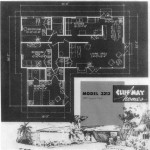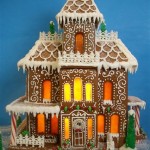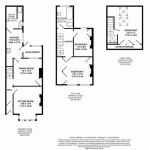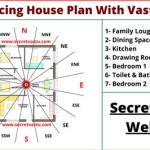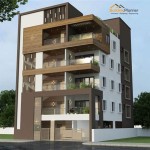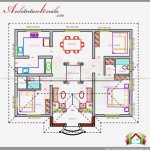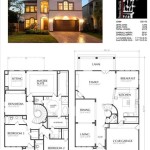Modern Rustic House Plans: Blending Comfort and Nature
The architectural landscape is constantly evolving, with homeowners seeking designs that offer both aesthetic appeal and functional living spaces. Modern rustic house plans have emerged as a popular choice, seamlessly integrating the warmth of natural materials with the clean lines and open layouts of contemporary design. This architectural style offers a harmonious blend of comfort and sophistication, creating homes that are both inviting and stylish.
Modern rustic design is not simply about incorporating wood and stone. It is a carefully curated approach that emphasizes the authenticity of materials, the connection to the surrounding environment, and the creation of a comfortable and livable space. This style moves away from the overly polished and refined look of traditional modern design, embracing imperfections and celebrating the inherent beauty of natural elements.
The appeal of modern rustic house plans lies in their ability to create a sense of tranquility and connection to nature, particularly in an increasingly urbanized world. The use of natural materials, such as exposed beams, reclaimed wood, and stone accents, evokes a sense of warmth and authenticity, creating a welcoming atmosphere. Large windows and open floor plans further enhance the connection to the outdoors, allowing natural light to flood the living spaces.
Furthermore, modern rustic homes often incorporate sustainable design principles, utilizing energy-efficient materials and technologies to minimize their environmental impact. This commitment to sustainability aligns with the growing awareness and desire for environmentally conscious living.
Key Features of Modern Rustic House Plans
Several defining features characterize modern rustic house plans, contributing to their unique aesthetic and functional appeal. Understanding these elements is crucial for anyone considering this architectural style for their future home.
Natural Materials: The cornerstone of modern rustic design is the extensive use of natural materials. Wood, stone, and metal are prominent elements, often left in their raw or minimally processed state to showcase their natural textures and imperfections. Exposed wooden beams, stone fireplaces, and reclaimed wood flooring are common features that add warmth and character to the interior spaces. Exterior facades may incorporate stone cladding, wood siding, or a combination of both to create a connection to the surrounding landscape.
Open Floor Plans: Modern rustic homes typically feature open floor plans that promote a sense of spaciousness and connection. Kitchens, living rooms, and dining areas often flow seamlessly into one another, creating a large, communal living space. This open layout is ideal for entertaining guests and facilitates family interaction. The absence of walls allows for ample natural light to penetrate deep into the interior, further enhancing the sense of openness and connection to the outdoors.
Large Windows and Natural Light: Maximizing natural light is a key priority in modern rustic design. Large windows and skylights are strategically placed to capture sunlight and provide panoramic views of the surrounding landscape. These windows not only illuminate the interior spaces but also blur the boundaries between the indoors and outdoors, creating a seamless transition between the built environment and nature. The increased natural light contributes to a brighter, more cheerful atmosphere and reduces the need for artificial lighting during the day.
Simple and Clean Lines: While embracing natural materials and textures, modern rustic design also incorporates clean and simple lines characteristic of modern architecture. This combination creates a balanced aesthetic that is both rustic and refined. The use of minimalist detailing and uncluttered spaces allows the natural materials to take center stage, creating a focal point for the design. Avoidance of elaborate ornamentation and unnecessary embellishments further emphasizes the simplicity and functionality of the design.
Neutral Color Palettes: Modern rustic interiors typically feature neutral color palettes that complement the natural materials and textures. Earthy tones, such as browns, grays, and greens, are commonly used to create a warm and inviting atmosphere. These colors evoke a sense of tranquility and connection to nature, further enhancing the overall rustic feel of the home. Pops of color can be introduced through artwork, textiles, and accessories, adding personality and visual interest to the space.
Adapting Modern Rustic Plans to Different Settings
The adaptability of modern rustic house plans makes them suitable for a wide range of environments, from rural retreats to suburban neighborhoods. The key is to tailor the design to the specific characteristics of the surrounding landscape and the needs of the homeowner.
Rural Settings: In rural settings, modern rustic homes can seamlessly blend into the natural environment, utilizing local materials and design elements that reflect the regional vernacular architecture. Incorporating features such as large decks or patios allows residents to fully enjoy the outdoor spaces and connect with the surrounding landscape. The design can also take advantage of natural features such as streams, forests, or mountains, creating a unique and personalized living environment.
Suburban Settings: In suburban settings, modern rustic house plans can be adapted to fit within the existing architectural context while still maintaining their unique character. The use of natural materials can be balanced with more contemporary elements, such as sleek metal accents or glass facades, to create a modern yet rustic aesthetic. Careful attention to landscaping can further enhance the connection to nature, creating a private and tranquil oasis within a more densely populated area.
Urban Settings: Even in urban environments, modern rustic design can be successfully implemented. Incorporating elements such as exposed brick walls, reclaimed wood furniture, and indoor plants can bring a touch of nature into the urban living space. Large windows and balconies can provide access to natural light and fresh air, counteracting the often-claustrophobic feeling of urban living. Vertical gardens or rooftop terraces can further enhance the connection to nature, creating a green oasis within the concrete jungle.
Interior Design Elements in Modern Rustic Homes
The interior design of a modern rustic home complements the architectural style, creating a cohesive and harmonious living space. Several key elements contribute to the overall aesthetic.
Furniture: Furniture choices typically favor pieces crafted from natural materials, such as wood, leather, and linen. Simple and functional designs are preferred over ornate or overly elaborate styles. Reclaimed wood furniture is a popular choice, adding character and history to the space. Comfortable and inviting seating arrangements encourage relaxation and socializing.
Lighting: Lighting fixtures play a crucial role in creating the desired atmosphere. Warm and ambient lighting is preferred over harsh or sterile lighting. Natural light is maximized through the use of large windows and skylights. Pendant lights, sconces, and floor lamps are used to provide task lighting and create focal points. Light fixtures crafted from natural materials, such as wood, metal, or glass, complement the overall rustic aesthetic.
Textiles: Textiles add warmth and texture to the interior spaces. Natural fibers, such as wool, cotton, and linen, are commonly used for rugs, curtains, and upholstery. Chunky knit blankets, woven throws, and textured pillows add to the cozy and inviting atmosphere. Patterns are often simple and understated, reflecting the overall minimalist aesthetic.
Accessories: Accessories provide opportunities to personalize the space and add visual interest. Natural elements, such as plants, stones, and branches, can be incorporated into the decor. Handmade ceramics, vintage finds, and artisanal crafts add character and authenticity. Minimalist artwork and photography complement the overall aesthetic.
Fireplaces: Fireplaces are a central feature in many modern rustic homes, providing warmth, comfort, and a focal point for the living space. Stone fireplaces are a classic choice, adding a sense of rustic charm. Modern fireplaces with clean lines and minimalist designs can also be incorporated, creating a more contemporary aesthetic. A fireplace serves as a gathering place for family and friends, creating a cozy and inviting atmosphere.
Modern rustic house plans offer a compelling blend of comfort, style, and sustainability, appealing to homeowners who seek a connection to nature and a sense of tranquility in their living spaces. The careful integration of natural materials, open floor plans, and minimalist design principles creates homes that are both beautiful and functional.

House Plans And Design Rustic Contemporary Home Exterior

Charming Rustic House Plans Blog Eplans Com

Shady Oaks House Plan Farmhouse Craftsman

Rustic Ranch House Plans Houseplans Blog Com

Charming Rustic House Plans Blog Eplans Com

The Modern Rustic Home Classic Materials Contemporary Design

Simple One Story Modern Farmhouse House Plans Don Gardner

Contemporary Style House Plan 3 Beds 2 Baths 1878 Sq Ft 48 944 Plans Farmhouse Modern Floor

The Ultimate Guide To Modern Farmhouses Houseplans Blog Com

Charming Rustic House Plans Blog Eplans Com

